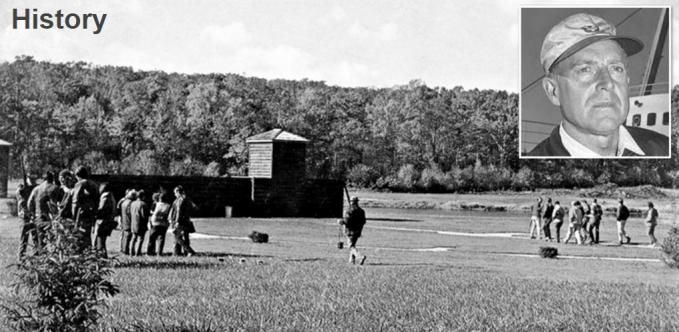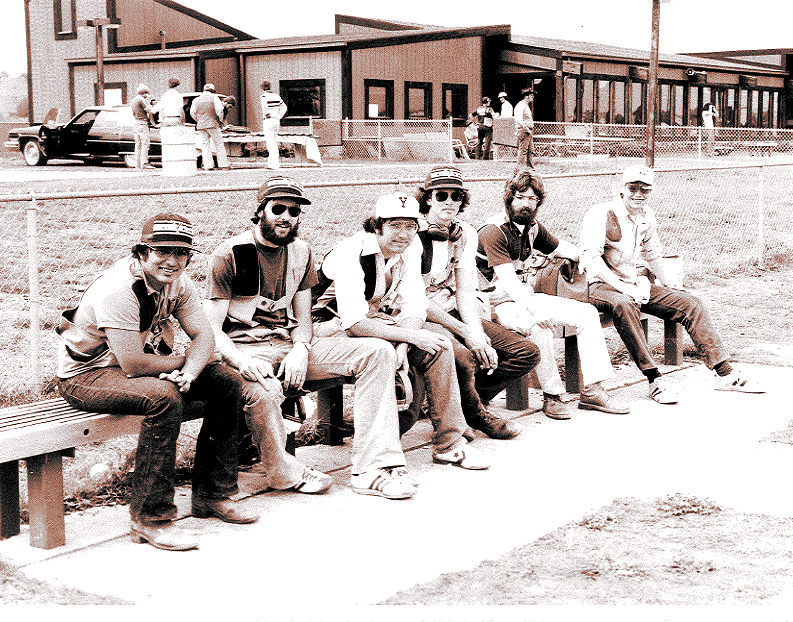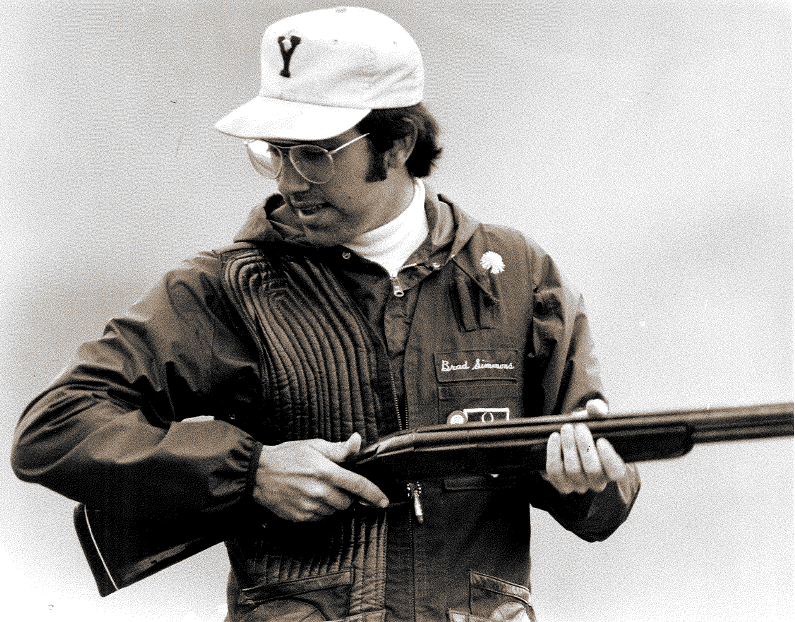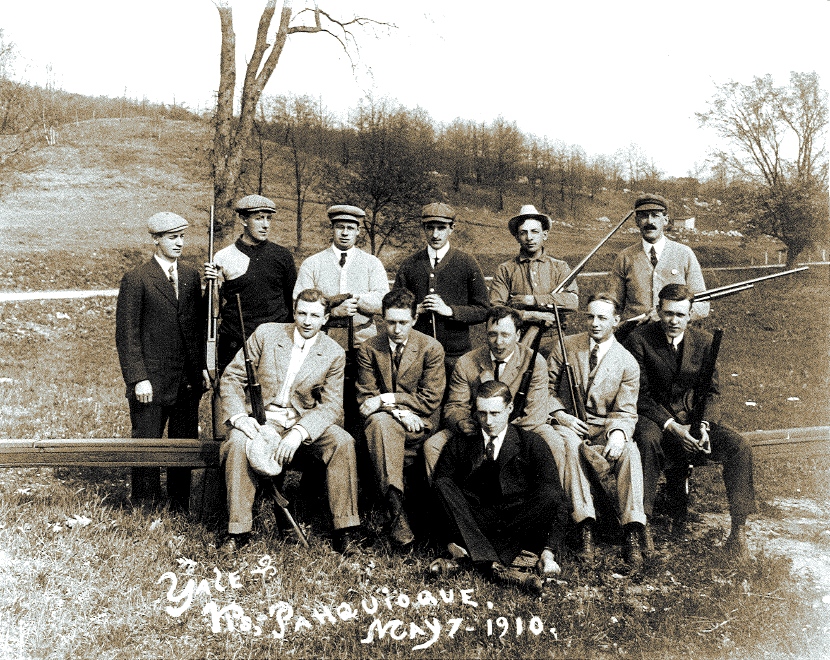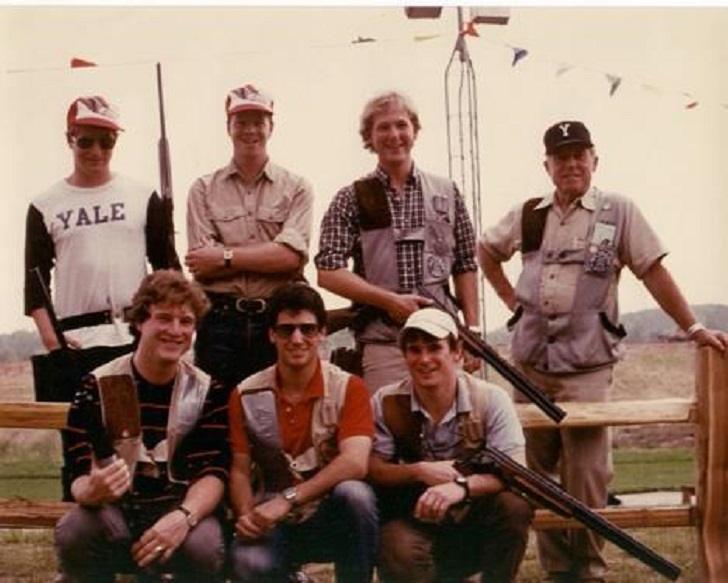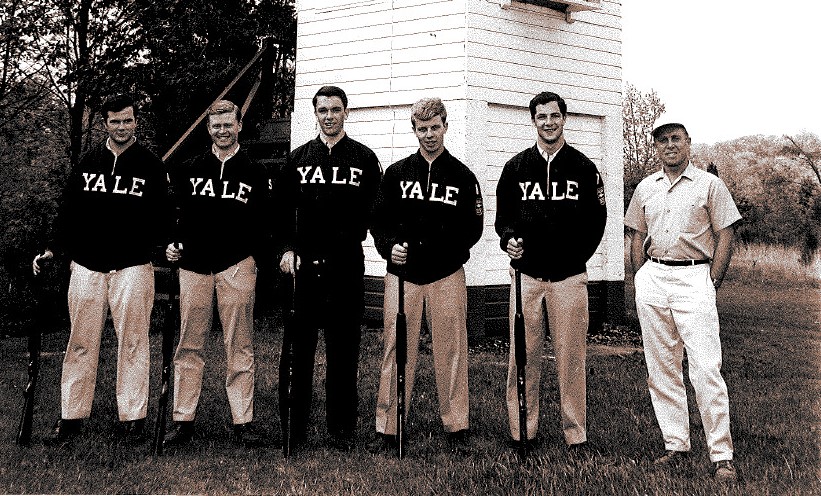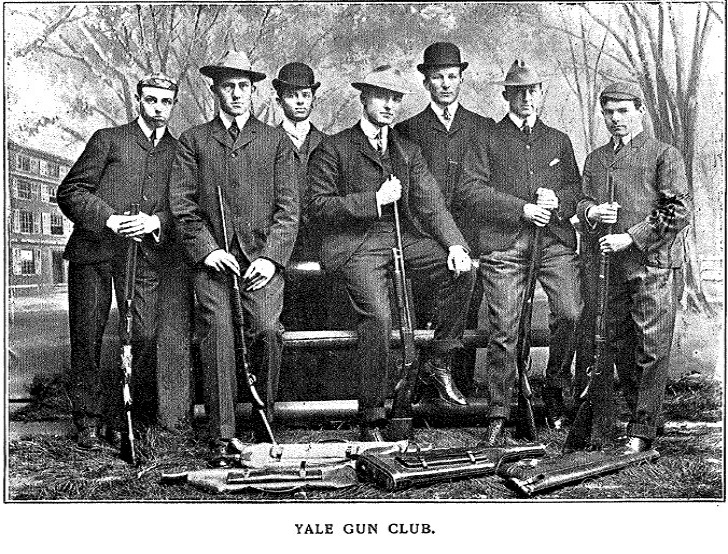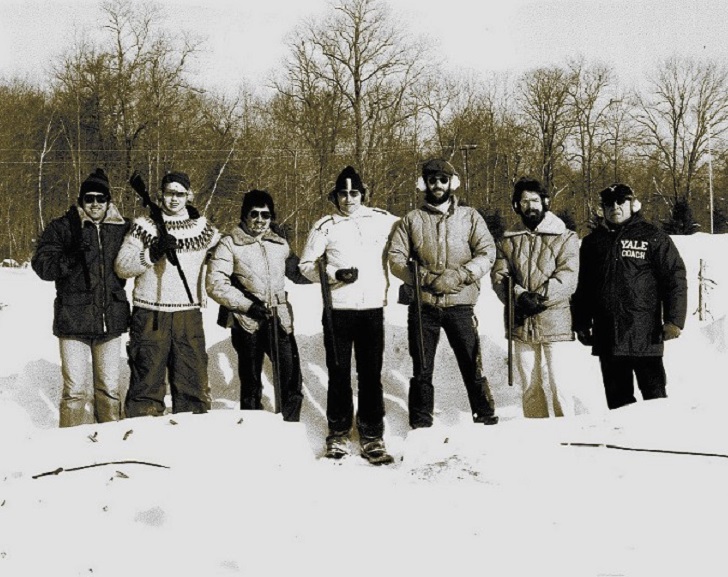The Yale Skeet & Trap Team is one of Yale’s oldest club sports, a tradition that stretches back to the late 19th century. According to an article published on November 11, 1892 in the New York Times, the first annual trap match between the Yale and Harvard Gun Clubs took place in 1888. Not surprisingly, Yale won the match three out of the first four times it was held. By 1896 the Princeton shooting club had entered the competition in what became the annual intercollegiate trap shoot. According to the account of the 1896 match, “The Harvard butts are on low ground and wind and tide so backed up the Charles River that the last men who were at the targets had to stand in four inches of water and shoot out to sea.” Fittingly, Yale shooters won that first intercollegiate match despite the typically miserable conditions they found in Cambridge. By 1900, the University of Pennsylvania was competing in the annual intercollegiate shoot, with Yale continuing to dominate its Ivy League rivals.
The first two decades of the twentieth century witnessed Yale’s continued excellence in collegiate shotgun sports. By 1915, Yale had established a dominant superiority over its Ivy rivals in the annual intercollegiate championship, which now included Dartmouth College as a competitor. A 1922 article from the New York Times reports the Yale Gun Club winning the intercollegiate shoot for the 13th consecutive time, a match that was held on the grounds of the New Haven Gun Club. In what was a familiar refrain by then, Harvard’s shooters had to settle for second place.
It is here that the historical record goes blank until 1940, and it is unclear what became of shotgun sports at Yale during the Great Depression and pre-WWII era. In January 1940, students organized the Skeet Club, with an annual membership fee of $5. The modern Yale Skeet & Trap Team has been in continuous operation since its 1940 founding as the Skeet Club and recently celebrated its 70th anniversary of clay target shooting.
In 1940 Nelson Boyce and Howard Ingels (class of 1943), the founding members of the Yale Skeet Club, secured land on the grounds of the Yale Golf Course to build shooting fields for the club. They cleared the trees, built the skeet houses, and installed the traps themselves. The fields were dedicated on May 1, 1940 and hosted shoots against Princeton and the New Haven Gun Club during that first year. Press accounts make no mention of Harvard competing against the reorganized Yale team in the 1940s, perhaps due to lingering embarrassing memories of their inability to mount a successful challenge to Yale for the better part of 30 years earlier in the century. In 2009, the Harvard Shooting Team was reorganized (though perhaps not reformed), thereby reviving the storied Ivy League shooting rivalry of decades past. Though the enthusiastic Harvard shooters had the chance to prove their mettle against Yale in their first direct competitions in 2010 and 2011, the Cantabs were (somewhat predictably) trounced by Yale’s finest, a trend that is likely to endure for many years to come.
1940 also witnessed the beginning of a distinguished tradition that continues to this day. This refers to the regular competitions between the Yale Skeet & Trap Team and the shooters of the United States Military Academy (West Point). With Yale’s shooters apparently off the collegiate shooting circuit during the late 1930s, Army took the lead as the top collegiate clay target team. In 1940 and 1941, Yale finished in second place in the Intercollegiate tournament, beaten both times by Army. However, Yale managed to best the cadets of West Point for the first time in May 1941 (453 to 446 out of 500) in the last formal match of the season at the famed Remington Gun Club at Lordship Point, CT. Today the Yale Skeet & Trap Team considers the USMA to be our primary collegiate rivals thanks to our evenly-matched teams, the high academic standards held by both institutions, and the friendly biannual head-to-head matches hosted by each team.
Unfortunately, the Yale Skeet Club’s use of their field on the grounds of the Yale Golf Course was short-lived due to complaints by golfers about the distracting gunshots. This began a nearly 30-year period where Yale’s shotgunners were without a permanent home, instead practicing at local facilities like the Hamden Rod and Gun Club, Winchester’s Bethany Range, Choate School, and Winchester-Western’s facilities in North Haven.
The Skeet Club’s transience was finally rectified by a remarkable man with a vision who established the foundations of the modern Yale Skeet & Trap Team. Edward C. Migdalski, a researcher and specimen collector for Yale’s Peabody Museum and the Bingham Oceanographic Laboratory, founded the Club Sports program at Yale in the late 1950s, seeking to elevate the so-called “minor sports” to officially recognized collegiate status. In this respect, Migdalski was an early nationwide pioneer of the club sports model that can be found at most colleges and universities today. Skeet and trap was one such club sport at Yale, and Migdalski took the reins of the team as head coach in the early 1960s.
Thanks to years of tireless work and extensive fundraising, Ed Migdalski succeeded in establishing the Yale Outdoor Education Center in East Lyme, Connecticut, and in 1971 construction was completed on a permanent shooting facility for Yale’s clay target shooters. Fittingly, Yale won its first match on its new fields, beating Dartmouth that day. In addition to to building a trap field, two skeet fields, hiking trails, and a trout pond (for use by the Yale Fishing Club, which Migdalski also founded), Migdalski succeeded in converting an existing historic cow barn into the clubhouse that the team still uses today.
During Ed Migdalski’s tenure, the Yale Skeet & Trap team claimed its place once again as a top collegiate shooting program in the United States. The Yale team was a participant in the first annual Intercollegiate Clay Target Championship (currently run by ACUI) in 1968 and has competed in the tournament every year since. Yale’s shooters won the 1977 collegiate national skeet championship as well as many local and regional tournaments under Migdalski’s leadership. In 1976, Yale skeet shooter Brad Simmons competed in the summer Olympic Games in Montreal, becoming the first civilian to compete on the U.S. Shooting Team in over 20 years. Simmons went on to be a member of the U.S. skeet team that won the 1977 World Championship and remains an active supporter of the team today, as do many of the alumni who have honed their shooting skills in East Lyme over the years.
Ed Migdalski retired from coaching in 1984, handing over the reins to his son, Tom Migdalski, who now coaches the team. Ed Migdalski passed away in December 2009, leaving behind a rich legacy of excellence in the shotgun sports at Yale, a legacy that the team keeps alive today through its commitment to developing scholar athletes who excel on the fields as well as in the classroom.
Team history researched and written by Rob Person (GRD ’10).
